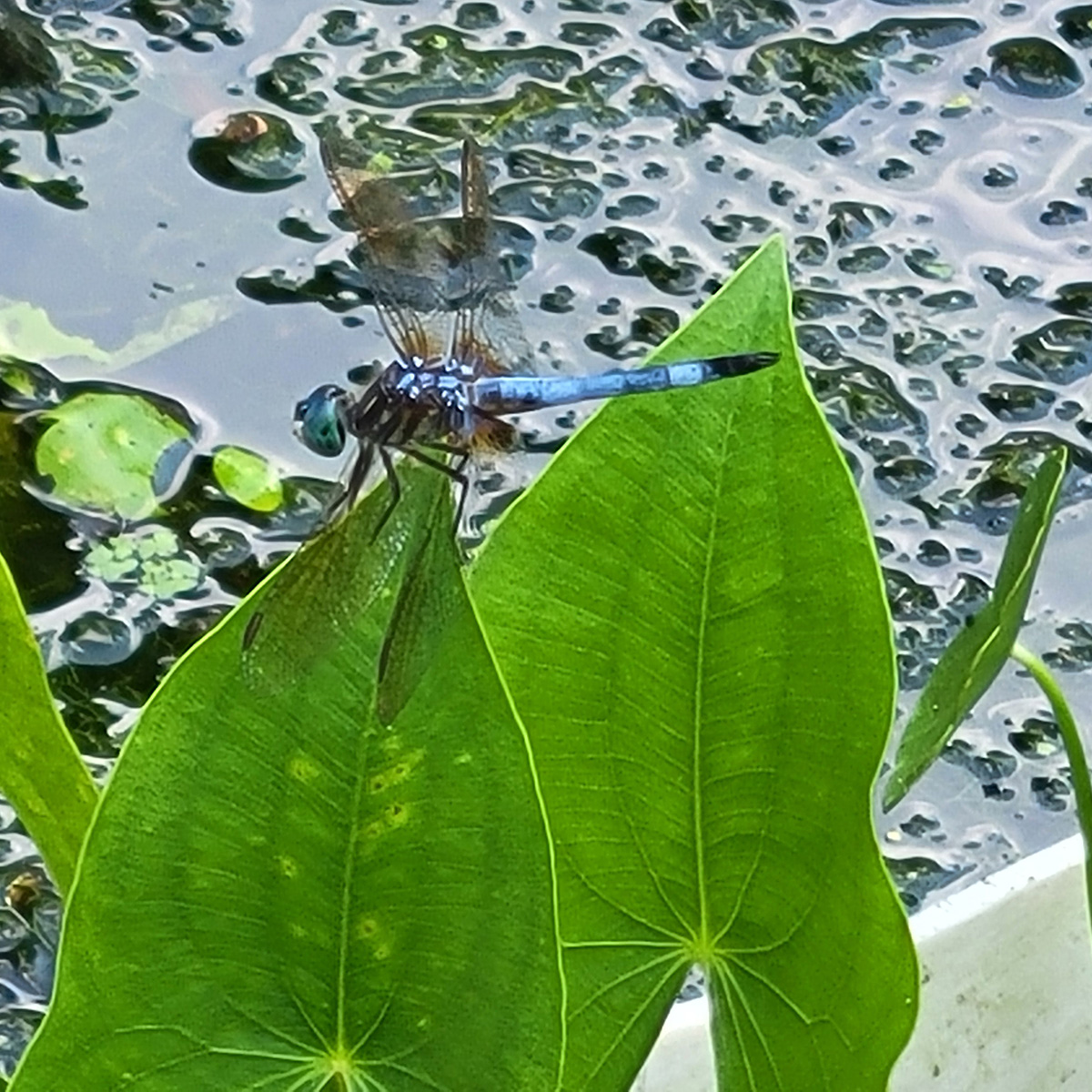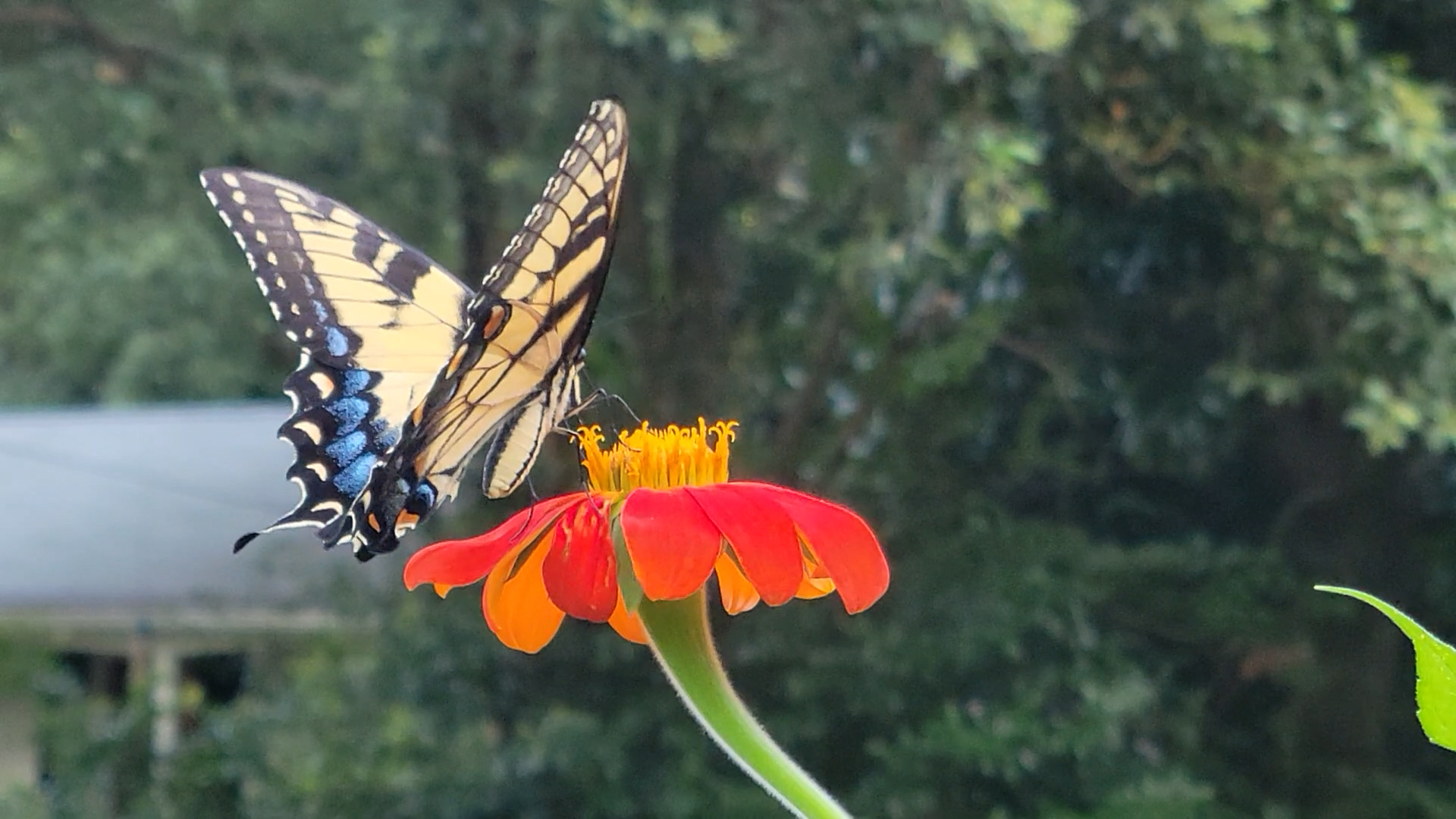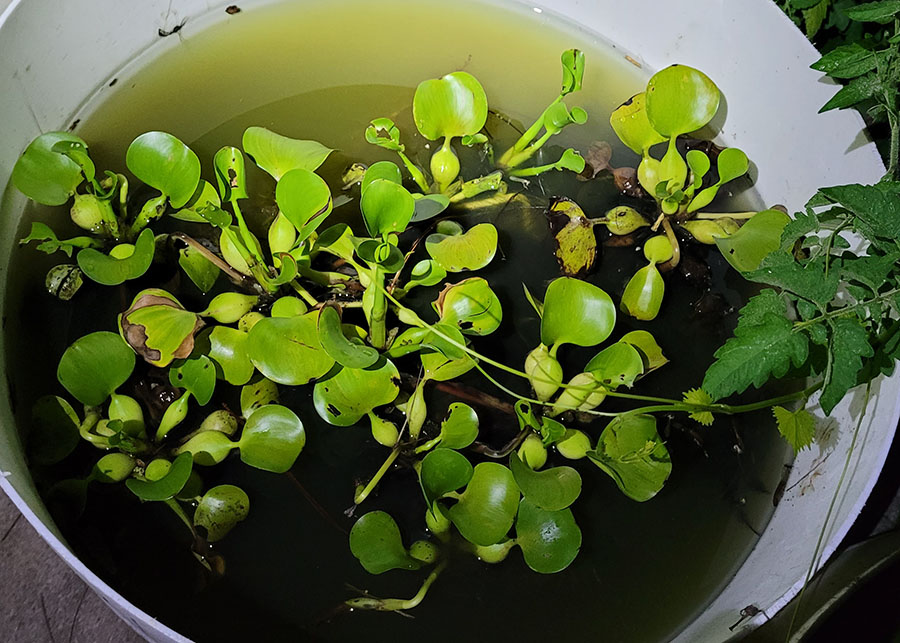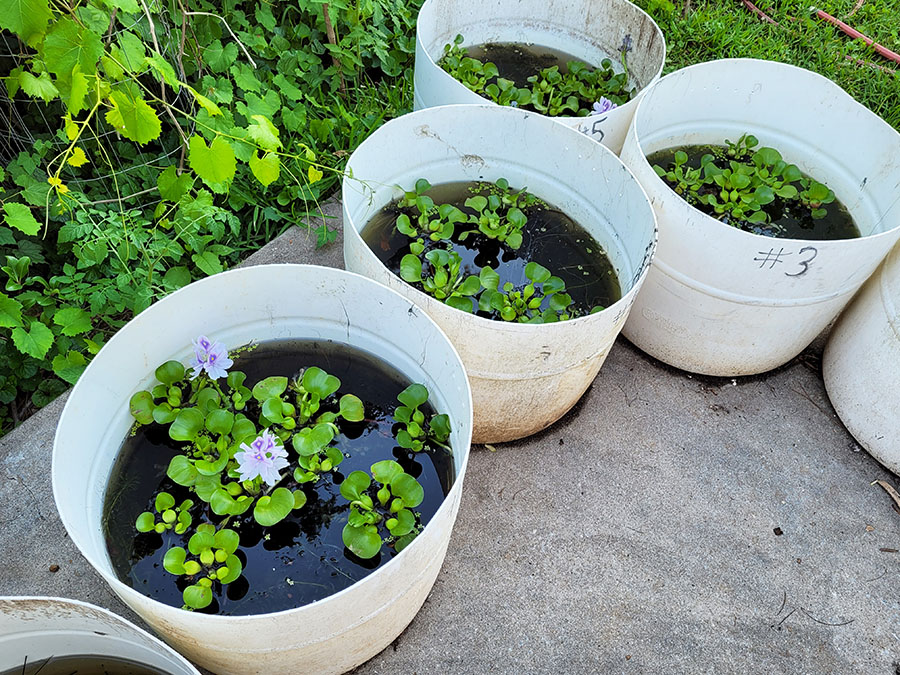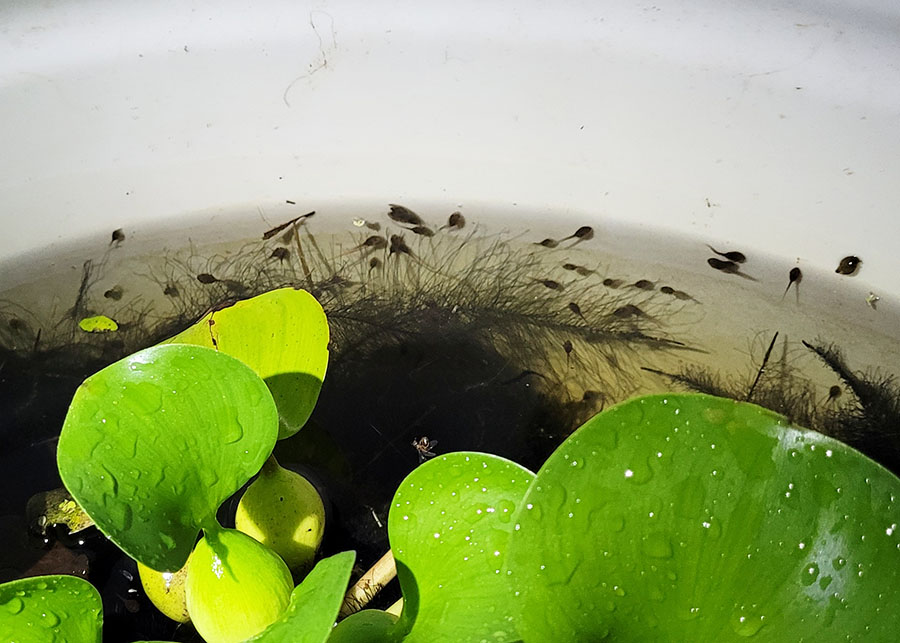The ponds and breeding tanks have been hosting a growing population of blue dasher dragonflies for years, but the previous two springs were dry with no rainfall for six to eight weeks. This year, it rained nearly every day for five or six weeks, and the population of blue dasher dragonflies has exploded.
Category: Tadpole Tanks
Urban Ecological Oasis Videos, 2024
Each year, the number of native species that use my tiny urban pollinator meadow increases, with many beneficial insect species reproducing there or spending their entire life cycle there. All of these were filmed in my tiny yard (Yalobusha Farms) in August, 2024.
Tree Frog Tadpoles 2023
In 2023, I managed to keep the juvenile green frogs (L. clamitans) out of the breeding tanks, and so the tree frogs (H. chrysoscelis) were able to reproduce without interference. There was an eight-week drought in April and May, and so I suspected the year might be a disaster for wildlife, but when the rains… Continue reading Tree Frog Tadpoles 2023
Eutrophic Collapse
Eutrophication is when the phytoplankton population explodes and depletes all the oxygen and kill all or most of the animals. This happens when nitrogen and phosphorus nutrients build up and cause the algae to bloom. The ecology in Experiment Tank #6 crashed from Eutrophic Collapse. How did it get overwhelmed with nitrogen and phosphorus? Because… Continue reading Eutrophic Collapse
Young Adult Green Frog (Lithobates clamitans)
This is a young adult Green Frog. It is much smaller than the old blue-faced males in the ponds, but it is still an adult and reproductively active, capable of laying a clutch of several hundred eggs in a night:
Experiment Tanks
I had some downcycled plastic barrels that I had previously used as rain barrels before discovering how much maintenance it took to ensure mosquitoes weren’t reproducing in them. I cut these in half and plugged any holes and set up eight of these as breeding tanks for mosquito fish and tree frogs on my back… Continue reading Experiment Tanks
Frog Eggs: Cope’s Gray Tree Frog (Hyla chrysoscelis)
Cope’s Gray Tree Frog (Hyla chrysoscelis) apparently lays larger clutches than I have seen in the past. Previously, all the clutches I observed were smaller and broken up into different clumps separated by floating vegetation. I speculated that was because the mating parents were avoiding the larger Green Frogs. I’m not sure why the eggs… Continue reading Frog Eggs: Cope’s Gray Tree Frog (Hyla chrysoscelis)
Videos of Tadpoles Swimming in Experiment Tank #6
At the bottom of this post are two videos of tadpoles of the Green Frog (Lithobates clamitans) swimming in experiment tank #6. One video is from June 27, 2022, and the second is from June 30. Juvenile Green Frogs have laid several clutches of eggs in all eight experiment tanks. Cope’s Gray Tree Frogs (Hyla… Continue reading Videos of Tadpoles Swimming in Experiment Tank #6
